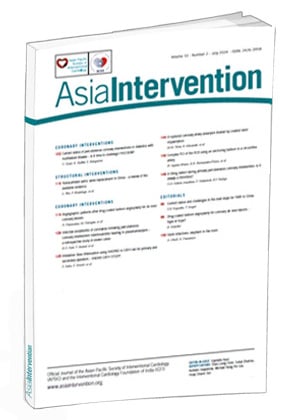There are some strange things happening in interventional cardiology. The concept of local intravascular drug delivery with drug-coated balloons (DCBs) is experiencing worldwide hype for the treatment of coronary heart disease. When we presented the first preclinical results on DCBs in the early 2000s1, the typical reaction was that it wouldn’t work: even though it worked in pigs, it wouldn’t work in humans; and even if it could work in humans, nobody would need such a technology, let alone use it.
At that time, we had no real understanding of the clinical indications in which DCBs could be helpful. It was also not possible to predict from the animal data whether their efficacy could be clinically proven at all or, on the contrary, whether patients could be harmed by an excessive effect, as was the case with some early concepts for drug-eluting stents (DES). My proposal was, therefore, to start with a safe indication that also represented an unmet clinical need, namely coronary in-stent restenosis (ISR), as a stent is already in place with a lot of tissue protecting it. The first clinical study of the ISR indication was successful and paved the way for the niche indication of DCB use for coronary ISR2.
The notion of treating de novo lesions, on the other hand, came from the field of peripheral vascular interventions. Gunnar Tepe and Thomas Zeller encouraged us to support a trial on the treatment of femoropopliteal lesions, of which I was very critical at the time. Nevertheless, the THUNDER Trial was the first to show the usefulness of DCBs in peripheral interventions and fundamentally changed peripheral interventional strategies3.
Some lessons had to be learned in the treatment of coronary de novo lesions. For example, it makes little sense to combine DCBs with bare metal stents4. It is important to recognise which lesions require mechanical support in the form of a DES and which do not. This led to the now well-accepted concept of “DCB only”, which focuses on lesion preparation and leaves the decision between DES and DCB until the end of the procedure56. The advantages of this concept include the recovery of vasomotion7 and the possibility of arterial remodelling8.
Nevertheless, there are numerous open questions. In this issue of AsiaIntervention, Funayama and colleagues have presented a carefully conducted analysis of 337 lesions in 318 patients treated successfully according to the “DCB-only” approach, for which they are to be congratulated9.
The binary restenosis rate was 8.9%, with focal restenosis in the majority of cases and just one occluded artery. It should be noted here that patients who did not undergo control angiography were excluded from this analysis. Therefore, an overrepresentation of symptomatic patients is to be expected, and the restenosis rate may be overestimated. The good news is that most of the lesions were focal, and, above all, were not cases of stent failure. This suggests that these restenoses can be treated effectively and have a good prognosis. The non-restenotic lesions showed late lumen enlargement in about half of the cases without any aneurysm formation. An interesting finding was that 8.0% of patients had plaque cavities at follow-up angiography, supporting previous reports from the same group of authors on drug-induced plaque regression10.
The findings of the present study by Funayama and colleagues are a further piece of the puzzle in a new era of interventional vascular therapy, moving away from the primary insertion of rigid permanent tubes towards a therapy that allows the restoration of natural vascular function. A possible failure of the therapy − in the form of restenosis − seems to be easier to treat than the occurrence of ISR.
However, the clinical evidence available for a “DCB-only” approach from large randomised trials is still limited. Conducting large all-comer studies is an important task here. Strategy studies that aim to move from a “full metal jacket” approach to a significant reduction in the number and length of permanent implants are the most likely to make sense.
Conflict of interest statement
B. Scheller is a shareholder of InnoRa GmbH; and has received lecture fees from B. Braun and Medtronic.

